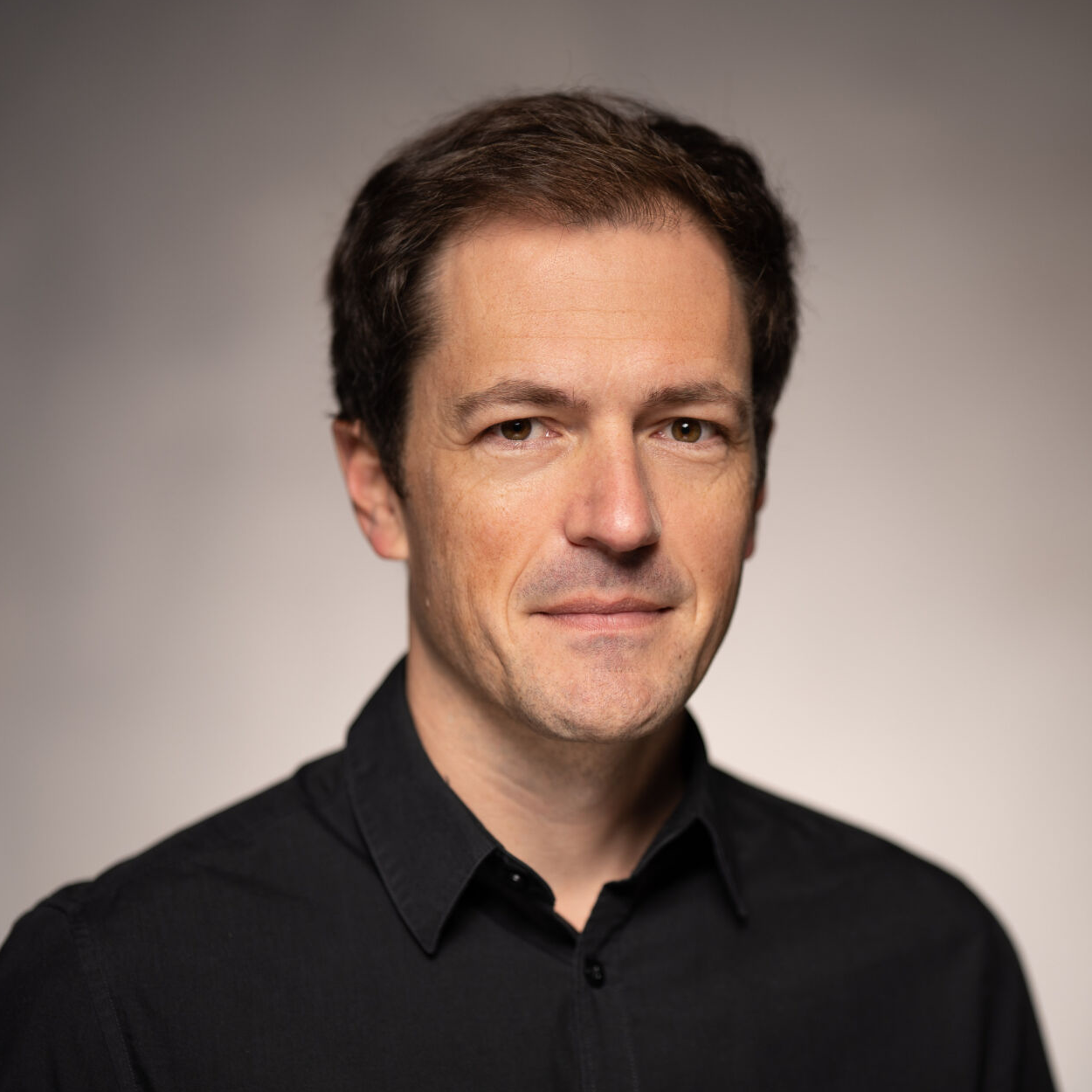Quantum field theory 1, lecture 24
Expanding out exponentials
We now consider the full partition function and expand out the exponentials, \[\begin{split} Z[\bar{\eta},\eta,J] = & \sum^{\infty}_{V=0} \frac{1}{V!} \left[\int_x\left(\frac{1}{i}\frac{\delta}{\delta J^\mu(x)}\right) \left(i\frac{\delta}{\delta \eta_\alpha(x)}\right)\left(-e\gamma^\mu_{\alpha\beta}\right)\left(\frac{1}{i}\frac{\delta}{\delta \bar{\eta}_{\beta(x)}}\right)\right]^V \\ &\times \sum^{\infty}_{F=0} \frac{1}{F!}\left[\int_{x',y'} i\bar{\eta}_\alpha(x') \left(\frac{1}{i}S_{\alpha\beta}(x'-y') \right) i\eta_{\beta}(y') \right]^F\\ &\times \sum^{\infty}_{p=0}\frac{1}{P!}\left[\frac{1}{2} \int_{x^{\prime\prime},y^{\prime\prime}} iJ^\mu(x^{\prime\prime}) \left(\frac{1}{i}\Delta_{\mu\nu}(x^{\prime\prime}-y^{\prime\prime}) \right) iJ^\nu(y^{\prime\prime})\right]^P. \end{split}\label{eq:partfunct}\] The index \(F\) counts the number of fermion propagators (corresponding to fermion lines in a graphical representation), the index \(P\) counts the number of photon propagators (photon lines). The index \(V\) counts vertices that connect fermion and photon in a specific way. More specifically, each power of this term removes one of each kind of sources and introduces \(-e\gamma^\mu_{\alpha\beta}\) to connect the lines in the graphical representation. The organization where factors of \(1/i\) come together with the fermion and boson propagators has also the advantage that factors of \(i\) that appear in the LSZ reduction rules nicely cancel out against them.
Graphical representation for partition function
In the full expression for \(Z[\bar\eta,\eta,J]\) many terms are present, in fact all graphs one can construct with fermion lines, photon lines and the vertex. For example

Note that these graphs need not be connected and the last diagram in the first line consists of two disconnected pieces.
Connected and disconnected diagrams
One distinguishes connected diagrams where all endpoints are connected with lines to each other, for example

Disconnected diagrams can be decomposed into several connected diagrams.
Tree and loop diagrams
One also distinguishes tree diagrams and loop diagrams. Loop diagrams have closed loops of particle flow, for example

Tree diagrams have no closed loop, for example

Counting the number of loops
Consider the partition function in \(\eqref{eq:partfunct}\). We have in each term
\(V\) vertices, each with \(3\) functional derivatives
\(F\) fermion propagators, each with \(2\) sources
\(P\) photon propagators, each with \(2\) sources
At the end this will lead to a term with the following number of sources left \[E = 2 (F+P) - 3 V.\] It is also useful to count the number of internal lines (those not connected to one of the \(E\) sources) and it must be such that \[2 I = 3 V - E.\] Another useful formula relates the number of loops \(L\) to the number of internal lines and vertices \[I = L + V - 1.\] To see this one may start drawing each loop in a simple topology with just one vertex and one line and then to modify it by adding more vertices. One can combine these formulas to give the number of loops as \[L = \frac{1}{2} V - \frac{1}{2} E +1 = 2 V - (F+P)+1.\] It is reassuring to check this formula on a few examples.
Corresponding algebraic expressions
To each of these diagrams with sources corresponds of course an algebraic expression, for example

To calculate S-matrix elements we are mainly interested in the connected diagrams because disconnected diagrams describe events where not all particles scatter. Also, we concentrate here on tree diagrams. Loop diagrams will be discussed somewhat later.
S-matrix elements
Now that we have seen how to represent \(Z[\bar{\eta},\eta, J],\) let us discuss how to obtain S-matrix elements. For example, for an outgoing photon we had the LSZ rule \[\sqrt{2E_p}\;a_{\mathbf{p},\lambda}(\infty) \to i\epsilon^{\nu*}_{(\lambda)}(p) \int d^4 x \; e^{-ipx} \left[-\partial_\mu\partial^\mu\right]A_\nu(x).\] To obtain the field \(A_\nu(x)\) under the functional integral we can use \[A_\nu(x) \to \frac{1}{i} \frac{\delta}{\delta J^\nu(x)},\] acting on \(Z[\bar{\eta},\eta, J].\) Moreover, \(i[-\partial_\mu \partial^\mu]\) will remove one propagator line for the outgoing photon, \[\begin{split} & i\left[-\partial_\mu\partial^\mu \right] \frac{1}{i} \Delta_{\rho\sigma}(x-y) = \left[-\partial_\mu\partial^\mu\right]\int\frac{d^4p}{(2\pi)^4} e^{ip(x-y)} \frac{\mathscr{P}_{\rho\sigma}(p)}{p^2 - i\epsilon} \\ & =\int \frac{d^4 p}{(2\pi)^4} e^{ip(x-y)} \mathscr{P}_{\rho\sigma}(p) \to \eta_{\rho\sigma} \delta^{(4)} (x-y). \end{split}\] The projector has no effect if the photon couples to conserved currents and the result is simply \(\eta_{\rho\sigma} \delta^{(4)} (x-y)\). What remains is to multiply with the polarization vector \[\epsilon^{*}_{(\lambda)\mu}(p)\] for the out-going photon with momentum \(p\). Also, the Fourier transform brings the expression to momentum space. The out-going momentum is on-shell, i. e. it satisfies \(p_\mu p^\mu =0\) for photons. Similarly, for incoming photons we need to remove the external propagator line and contract with \[\epsilon_{(\lambda)\mu}(p),\] instead.
For out-going electrons we need to remove the external fermion propagator and multiply with \(\bar{u}_s(\mathbf{p})\) where p is the momentum of the out-going electron satisfying \(p^2 + m^2 =0\) and \(s\) labels its spin state. Similarly, for an incoming electron we need to contract with \(u_s(p)\). For out-going positrons we need to contract with \(v_s(p)\). For an incoming positron the corresponding external spinor is \(\bar{v}_s(p)\).
Propagators in momentum space
Working now directly in momentum space, the photon line is represented by \[-i\Delta_{\mu\nu}(p) = -i\frac{\mathscr{P}_{\mu\nu}(p)}{p^2 -i\epsilon} = -i \frac{\eta_{\mu\nu}-\frac{p_\mu\;p_\nu}{p^2}}{p^2-i\epsilon}.\] The fermion line corresponds to \[-i S(p) = -i\frac{-i\slashed{p}+m}{p^2+m^2-i\epsilon}.\] The vertex is as before \(-e\gamma^\mu\). Momentum conservation must be imposed at each vertex. Together these rules constitute the Feynman rules of QED. One can work with the graphical representation and then translate to formula at a convenient point. However, when in doubt, one can always go back to the functional representation.
